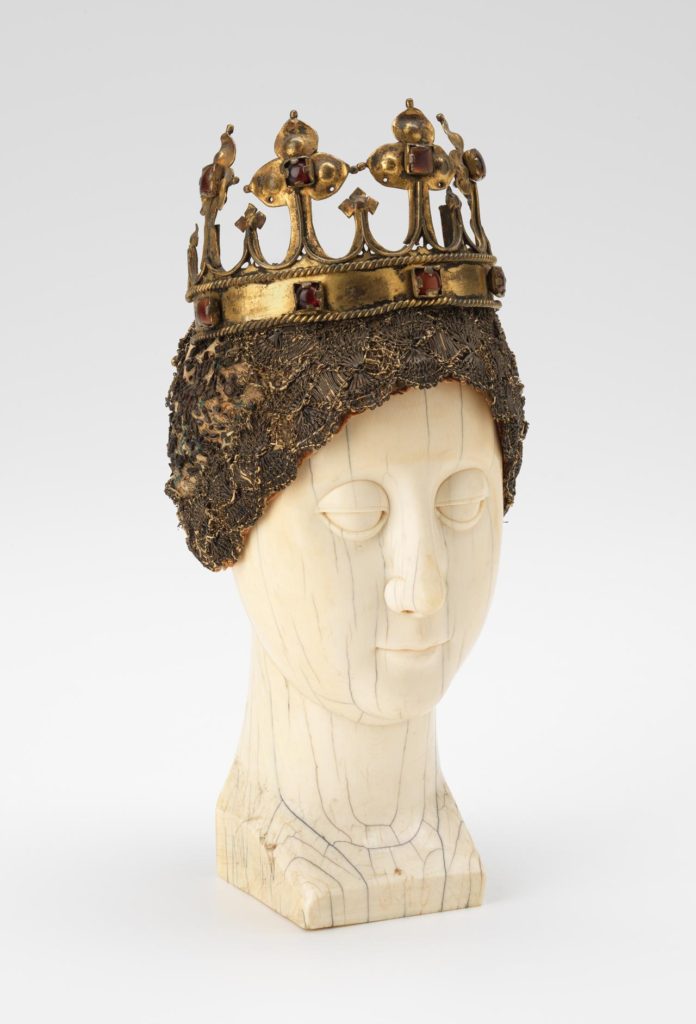
In medical terminology, foreign bodies are objects that are inside the body but do not belong to it. These are things like coins or batteries that can be swallowed. In many cases they need to be removed before, or in case, they do harm. Human bodies are affected by those items that they come into contact with, through ingestion into the body or touch on the outside of the body.
For most people in Early Modern Europe, the most common things to touch the exterior of the body on a daily basis were clothes. Then, as now, dress was a mode of communication, a language that could inform the viewer about social status, origin, and religious affiliation. Bodies could be controlled or empowered through clothing. Current debates surrounding the use of various types of Islamic dress and subsequent legislation – the ban on face covering and the restrictions on using the hijab in France; the requirement to wear the hijab when in public in Saudi Arabia and Iran – demonstrate some of the ways in which clothing is central to the values of society. How humans have regarded, covered, and uncovered the exterior parts of their bodies is a signifier of both difference and inclusion.
Dress had multiple meanings. It was a result of original sin. After Adam and Eve had both sinned by eating the fruit from the tree of the knowledge of good and evil they realised their state of nakedness and made clothing by sewing fig leaves together (Genesis 3:7). Clothing was therefore a sign of human sinfulness. It was also something which could be ascribed to God’s grace since before expelling Adam and Eve from Eden he clothed them with garments made of skin (Genesis 3:21).
Early costume books such as Cesare Vecellio’s Degli habiti antichi et moderni di diversi parti del mondo (Of ancient and modern clothes from different parts of the world), published in 1590, with an enlarged version published in 1598, divided clothing geographically. The commentaries provided with the woodblock illustrations contained not only details of clothing according to geographical location but also linked clothing with levels of civilisation and religious affiliation. In other contexts, the monstrous races living in foreign lands were frequently shown with no or little clothing. In shielding the outside of the body, clothing had practical purposes. It was understood by medical professionals to have profound effects on health. It could protect by ensuring warmth but it could also harm. High platform shoes, or chopines, were worn in Venice to prevent the wearer’s feet from getting wet. They could also be a health hazard since it was difficult to walk in them. Worn by patrician women who, it was said, sometimes needed the help of two maids to stop them from falling over, chopines also became associated with courtesans who wore them in emulation of women from the upper strata of Venetian society. These platform shoes bore the weight not only of the person who wore them but also of concerns relating to morals and health.
In order to regain or maintain health, bodies were sometimes altered through medical intervention. Early modern surgical procedures were limited but they included amputation, altering the body by removing parts, and some success with reconstructive surgery by moving skin from one part of a patient’s body to another. Amputation was most often the result of warfare and colonisation, something which involved large bodies of people moving from one place to another, from one country to another, frequently spreading disease as they did so. The arrival of syphilis in Naples in 1494–1495 was ascribed by the Neapolitans to the invading French army and gave rise to the appellation ‘French disease’, whereas the French called it the ‘Italian disease’. Whilst it is possible that syphilis may have been brought to Europe from the Americas, the European move into the Americas certainly devastated some populations who had no resistance to diseases such as typhus and cholera.
Bodies, individually and in groups, could be protected or harmed, changed for the better or for the worse by the things with which they came into contact, things as diverse as clothing, gunpowder, and disease.
Cordelia Warr, University of Manchester
Further Reading:
Ernest Lawrence Abel, ‘Syphilis: The History of an Eponym,’ Names: A Journal of Onomastics 66/2 (2018), 96-102.
Elizabeth Currie, ‘Health Hazards: Clothing’s Impact on the Body in Italy and England, 1550–1650,’ Bulletin of the John Rylands Library 95/2 (2019), 115-133.
Michelle A. Laughran and Andrea Vianello, ‘“Grandissma Gratia”: The Power of Italian Renaissance Shoes as Intimate Wear,’ in Bella Mirabella, ed., Ornamentalism: The Art of Renaissance Accessories (Ann Arbor: University of Michigan Press, 2011), 253-292.
Margaret F. Rosenthal and Ann Rosalind Jones, trans. and intro., The Clothing of the Renaissance World: Europe, Asia, Africa, the Americas – Cesare Vecellio’s Habiti Antichi Et Moderni (London: Thames and Hudson, 2008).